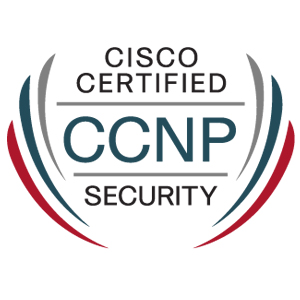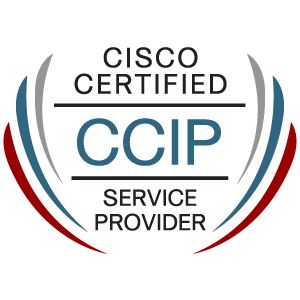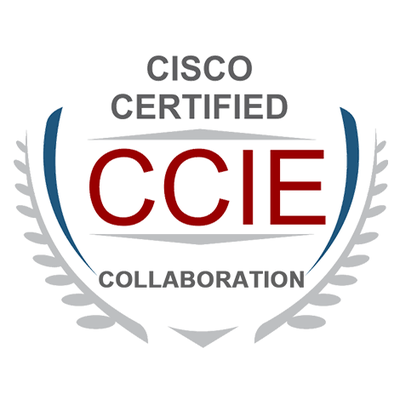In this hands-on training course, participants will cover the basics of data networking and practice new skills with leading-edge technologies from Cisco, Juniper, ADTRAN, HP, Dell, and Microsoft. With a strong foundation and an understanding of basic network functions, standards, and protocols, attendees will be prepared to tackle advanced networking concepts and technologies including TCP/IP, network security, wireless integration, and Voice over IP.
Overview
Duration:
: 100 Hours (including Labs)Delivery:
: OnlineWhat You Will Learn
How switches and routers interconnect using multiple vendors’ equipment IP addressing and how to create subnets How TCP/IP works and is configured on various devices To capture and view network traffic using a protocol analyzer The various wireless network options available Basic security and firewall issues How Ethernet works and how all of the various forms can be connected The basics of layered network protocols The difference between logical and physical network segments How to install Cat 6 UTP and fiber optic cables How VLANs function When and how to use NAT Function of various routing protocols such as RIP, IGRP, and OSPF An overview of WAN technologies Benefits and issues of Instant Messaging
Who Should Participate
This training is ideal for anyone who wishes to gain a solid networking foundation in a real-world, multi-vendor environment or take the first step in preparing for a career as an IT professional.
Course Contents
1. Network Overview
Defining a Network Reasons to Use a Network Network Components End Devices Operating Systems Network Infrastructure Network Types Network Services
2. Network Functions and Standards
Generic Network Functions Standards Organizations Institute of Electrical and Electronics Engineers (IEEE) Common WAN Serial Interface Standards Internet Organizations Internet Standards Process OSI Model Overview Layer 1: Physical Layer Layer 2: Data Link Layer Layer 3: Network Layer Layer 4: Transport Layer Layer 5: Session Layer Layer 6: Presentation Layer Layer 7: Application Layer TCP/IP Model
3. Local Signaling Media
Twisted-Pair Cabling Specifications Cable Runs Unshielded Twisted Pair Cabling Half-Duplex and Full-Duplex Operation Seven Keys to Successful UTP Wiring Fiber Optic Cabling Systems Fiber Optic Cabling Types Wireless Networking Systems Wireless Network Preparation Cellular Routers
4. Ethernet
Network Overview Network Interface Cards Ethernet Adressing Ethernet Connectivity Standards 10 Mbps Ethernet Connectivity Options 100 Mbps Ethernet Connectivity Options Gigabit Ethernet Overview 10 Gigabit Ethernet Connectivity Options 40 Gigabits and 100 Gigabits Ethernet Version II Frame Structure Ethernet Type Field IEEE 802.3 with 802.2 Frame Format Captured Frame Displayed by a Protocol Analyzer Ethernet Equipment Overview Ethernet Ports and Connectors Ethernet Switches Routers Integrating 10, 100, and 1,000 Mbps and 10 Gbps Ethernet Ethernet Performance Issues
5. Switching
Switching Overview Current Switch Installations Switch Operation Overview The Learning Process The Flooding Process The Forwarding and Filtering Process The Flooding Process Part 2 Switch Loop Problems Switch Configuration Port Security Spanning Tree Algorithm Overview STA Root Switch Election STA Path Selection Spanning Tree Timers STA Self-Healing Ability Spanning Tree Algorithm Alternates VLAN Overview VLAN Configuration VLAN Operation VLANs on Multiple Switches Switch Troubleshooting
6. Logical Addressing
Logical Address Overview Binary Numbering Converting Binary to Decimal Converting Decimal to Binary Conversion Practice Dotted Decimal Notation Logical Address Types Class-Based Addressing Network-Specific Addresses Reserved Addresses Private Addresses Network Masking Classless Addressing
7. Address Resolution Protocol (ARP)
Address Resolution Overview ARP Process ARP Messages ARP Cache Duplicate MAC Addresses Gratuitous ARP Proxy ARP ARP Restrictions ARP Command
8. Network Layer Process Logical Addressing Network Loop Handling Routing Decision-Making Path Control Multicast Management Communication Flexibility Multiplexing Data Length Management Quality of Service Data Receipt Verification Diagnostics Logical Error Reporting
9. Subnetting
Subnetting Overview Communication Between Hosts IP Address and Mask Subnetting Basics Subnet Rules Subnetting Decisions Four Key Addresses Case Study Masking for Subnets Masking for Interfaces Headquarters Addressing East Addressing West Addressing WAN Addressing
10. Routing Routing Overview Logical Segmentation Static Links vs. Dynamic Routing Router Configuration Overview Routing Protocols Routing Metrics Routing Decisions Routing Protocol Operation Routing Information Protocol RIP Routing Tables Open Shortest Path First (OSPF) Enhanced Interior Gateway Routing Protocol (EIGRP) Border Gateway Protocol (BGP)
11. WAN Overview
WAN Overview WAN Circuit-Switching WAN Packet-Switching
12. Host-to-Host Handling
Process Identification Application Port Numbering Temporary Ports Port Address Translation Connectionless Functions Connectionless Support Connection-Based Functions Connection Handshake Connection Shutdown
13. Supporting Processes Overview Dynamic Host Configuration Protocol (DHCP) Four-Step IP Addressing Process Domain Name System (DNS) Top-Level Domains Country Domains Dynamic DNS ICMP Overview The ping Command Variation Reports
15. Security
Network Security Overview Network Security Assessment Attack Types Hackers and Attackers Authentication Encryption Intrusion Detection Systems Content Filtering Firewalls Personal Firewalls Packet Filters Proxy Servers Stateful Inspection Firewalls Security Levels Single-Layer Protection Double-Layer Protection Triple-Layer Protection Virtual Private Networks (VPNs) Develop a Security Plan Vulnerability Assessment
16. User and Manager Processes
User and Manager Processes Overview Terminal Emulation File Transfer Connection-Based File Transfer Connectionless File Transfer E-Mail Sending E-Mail Retrieving E-Mail Web Browsing Uniform Resource Locator Network Management
17. Wireless LANs
Overview Wireless LAN Components Wireless Design Issues Wireless LAN Standards IEEE 802.11a IEEE 802.11b IEEE 802.11g IEEE 802.11n IEEE 802.11ac Wi-Fi Alliance Wireless Security Basic Security Steps Wired Equivalent Privacy Wi-Fi Protected Access Wi-Fi Protected Access 2 Standard Optional Solutions Cellular Wi-Fi Router
18. Instant Communications
Instant Messaging Overview Integrated Communications Presence Awareness Security Issues Short Message Service SMS Center Enhanced Messaging Service Multimedia Messaging Service Potential Future
19. Networking Advances
Internet Protocol version 6 (IPv6) IPv6 Addressing Internet2 What is Unified Communications? UC Components Unified Messaging Presence Web Conferencing Voice over Internet Protocol (VoIP) Voice over IP (VoIP) Uses for VoIP Why VoIP Instead of Traditional Voice? IPTV Streaming Protocol Decisions







